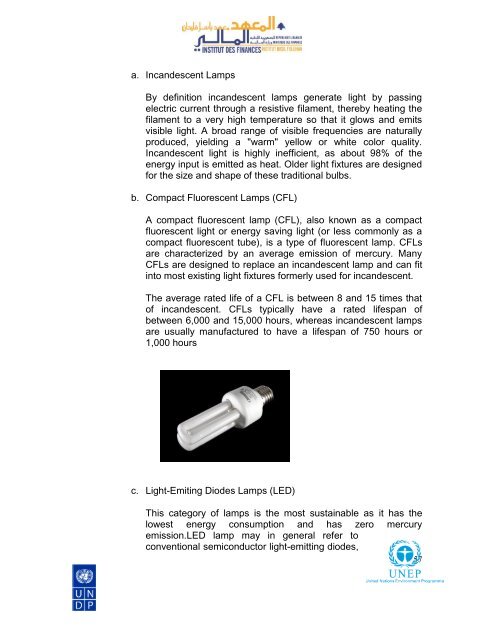Market Readiness Analysis
Market Readiness Analysis
Market Readiness Analysis
You also want an ePaper? Increase the reach of your titles
YUMPU automatically turns print PDFs into web optimized ePapers that Google loves.
a. Incandescent Lamps<br />
By definition incandescent lamps generate light by passing<br />
electric current through a resistive filament, thereby heating the<br />
filament to a very high temperature so that it glows and emits<br />
visible light. A broad range of visible frequencies are naturally<br />
produced, yielding a "warm" yellow or white color quality.<br />
Incandescent light is highly inefficient, as about 98% of the<br />
energy input is emitted as heat. Older light fixtures are designed<br />
for the size and shape of these traditional bulbs.<br />
b. Compact Fluorescent Lamps (CFL)<br />
A compact fluorescent lamp (CFL), also known as a compact<br />
fluorescent light or energy saving light (or less commonly as a<br />
compact fluorescent tube), is a type of fluorescent lamp. CFLs<br />
are characterized by an average emission of mercury. Many<br />
CFLs are designed to replace an incandescent lamp and can fit<br />
into most existing light fixtures formerly used for incandescent.<br />
The average rated life of a CFL is between 8 and 15 times that<br />
of incandescent. CFLs typically have a rated lifespan of<br />
between 6,000 and 15,000 hours, whereas incandescent lamps<br />
are usually manufactured to have a lifespan of 750 hours or<br />
1,000 hours<br />
c. Light-Emiting Diodes Lamps (LED)<br />
This category of lamps is the most sustainable as it has the<br />
lowest energy consumption and has zero mercury<br />
emission.LED lamp may in general refer to<br />
conventional semiconductor light-emitting diodes,<br />
57

















